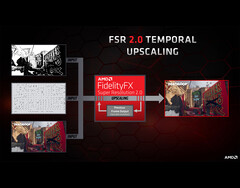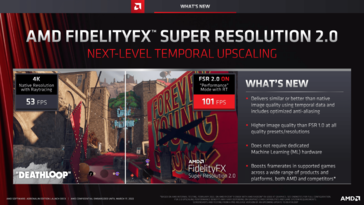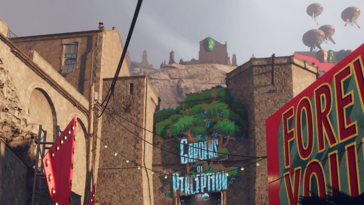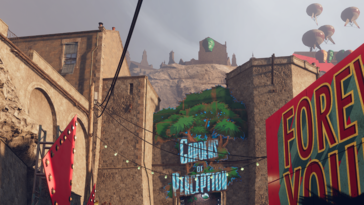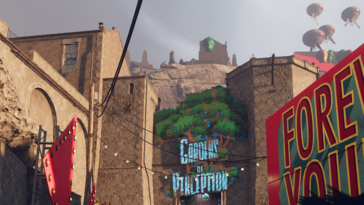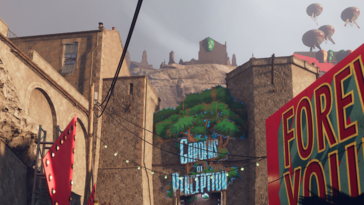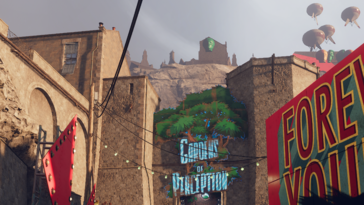With the release of the Adrenaline 22.31 graphics drivers, AMD is also providing official details on the FidelityFX Super Resolution 2.0 technology, mostly confirming all the leaked information from a few days ago. The most important change over the original FSR algorithm is that 2.0 uses temporal upscaling techniques rather than spatial. This is in-line with Nvidia’s latest DLSS iteration; however, unlike DLSS, FSR 2.0 does not require AI-enabled hardware, so it can be used on older models and it is not restricted to AMD GPUs either. AMD specifically mentions that FSR 2.0 should work on Nvidia GeForce and Intel Arc Alchemist models, but does not provide further details on limitations. Additionally, AMD claims that FSR 2.0 “delivers similar or better than native image quality” thanks to an optimized anti-aliasing method.
The temporal upscaler used in FSR 2.0 is superior to the spatial one from FSR 1.0 because, as explained by Computer Base, on top of analyzing each frame, the temporal algorithm combines additional data from previous frames in order to enhance the overall image quality. Since, for example, a pixel line is not displayed in the current frame, but parts of it may appear in previous frames, the temporal upscaler can produce a better image quality even compared to the native resolution, despite fewer render pixels. All this without special AI cores, and keep in mind that FSR offers higher fps counts compared to native resolution (up to 2X more in performance mode).
AMD is offering a comparison between FSR 2.0, 4K native and FSR 1.0 (quality and performance settings) through side-by-side screenshots and video footage from the game Deathloop. The screenshots clearly show that FSR 2.0 is superior to the original version, yet they also show how FSR 2.0 can be better than the native resolution, via the improved anti-aliasing method. This can be seen with all edges, plus fine pixel lines that are interrupted on 4K native captures (top right flying objects and top left of the balcony railing), whereas these appear displayed correctly with FSR 2.0 Quality mode. FSR 2.0 image stability also seems better compared to native resolution.
Texture sharpness in FSR 2.0 Quality appears to be slightly inferior to native resolution in most cases, but there are some wall textures that look more detailed in some FSR 2.0 stills. DLSS 2.0 is clearly superior as far as image sharpness is concerned, so AMD could maybe look into improving this aspect for the next iteration. AMD will reveal more FSR 2.0 details at GDC on March 23, and the first driver integration is expected to be available some time in Q2.
Buy the XFX Speedster SWFT 319 AMD Radeon RX 6800 XT CORE GPU on Amazon
Source(s)
via Computer Base / Videocardz




